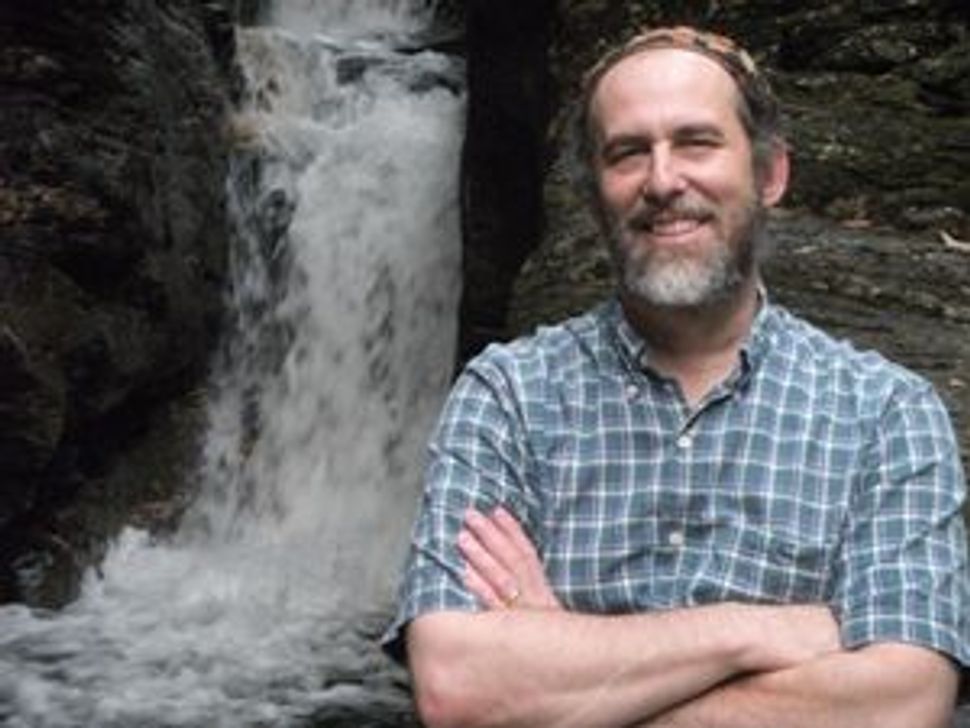Telling the Story of Israel’s Trees

Image by Michael Cohen
Following his successful Pollution in a Promised Land: An Environmental History of Israel leading Israeli environmental lawyer and activist Alon Tal has produced another must read for anyone interested in learning more about the land of Israel; in this case the trees that call that land home. His latest book, All the Trees of the Forest: Israel’s Woodlands from the Bible to the Present reads like a combination of a Sherlock Holmes novel filled with characters working to solve the case of what is best for the land of Israel when it comes to trees, and a tractate of the Talmud where divergent issues are explored that all add to a deeper understanding of the issue at hand.
While the focus of the book is Israel, with only “1/60,000 of the wooded area of the planet,” the information and lessons presented are, as Tal points out, both universal in nature and scope. As Tal writes, “In 1948, the planted stands and remnants of natural woodlands occupied less than 2 percent of the area of the State. By 2005 that figure had increased t some 8.5 percent, and should easily cross the 10 percent mark before stabilizing in a couple of decades. A land that was synonymous with erosion, desertification, and human neglect, is enjoying an environmental makeover.” He then continues, “This exercise in ecological rehabilitation occurred in a country where 97 percent of the ground is classified as ‘drylands,’ making it particular relevant for half of the planet where water will be scarce.”
Not that this has been an easy journey.
Trial and error, politics and conflict, make up the habitat of the challenging eco-system that such success was achieved. Tal informs us that during the Biblical period Israel “was dotted with woodlands…sported a rich variety of fruit and forest trees.” Over hundreds of years Roman, Mamluk, and Ottoman policies had devastating results when it came to the tree population of the land so that by the end of Ottoman rule “over 98 percent of the original , natural woodlands had vanished.” While early Zionists had begun to plant trees the great reversal of centuries of degradation began in earnest after World War One when the British introduced a formal policy of afforestation. At the same time the Zionist movement came into its own with the founding of the JNF Forestry Department under the leadership of Dr. Akiva Ettinger who would bring onto the team, Yosef Weitz, the eventual godfather of tree planting in Israel.
While the Zionist and British were both planting trees they were not entirely motivated by the same reasons. For the Zionists trees meant a political fact on the ground that also had economic benefits, while for the British trees were used against sand and soil erosion and to help bolster ground water reservoirs. The local Palestinian Arab community saw things from another perspective. For one, they had a different attitude towards the mostly treeless forest landscape being proud of their fellahin (peasant) agriculture of herding sheep and goats, along with the management of olive trees. Moreover they were very suspicious of what they perceived as colonial British and Zionist intentions. This all came to a head in the Palestinian Revolt of 1936 – 1939 where not only were lives lost but the intentional burning of trees was a tactic used by the Palestinian Arabs that lead to the loss of hundreds of thousands of trees. As Tal informs the reader, “Across the land of Israel, trees became analogous to soldiers, or what Irus Braverman has called ‘planted flags.’”
The establishment of the State of Israel in 1948 would bring different challenges and conflicts when it came to tress. The first was the need to determine where the real seat of power was housed when it came to the responsibility for planning and maintaining Israel’s woodlands. Was it with the Amihud Goor and his Ministry of the Agriculture or with Weitz and the JNF? The latter won, though it took until 1961 to resolve that question. The other great challenge that has come in the years after 1948 has been a growing sophistication when it comes to the questions of trees planted, including the transition from monoculture to mixed forests along with a better understanding of benefits of grazing, and the correct density for healthy tree groves. The issue of the Israeli Bedouin’s and their land claims has been at the forefront of the Israeli agenda of late. Tal presents a very thoughtful analysis of this very complex issue.
As the founder of Adam Teva v’Din and the Arava Institute for Environmental Studies along with being head of the Green Movement in Israel and sitting on the Board of Directors of the JNF, Alon Tal has more than walked the talk when it comes to environmental leadership and activism. We are more than fortunate that he finds the time to write through and informative books like All the Trees of the Forest. We can only hope he has time to write another book.
Michael Cohen, the reviewer, a rabbi, works for the Friends of the Arava Institute, teaches at Bennington College and is the rabbi emeritus of the Israel Congregation in Manchester Center, Vermont along with being the author of Einstein’s Rabbi: A Tale of Science and the Soul.

I hope you appreciated this article. Before you go, I’d like to ask you to please support the Forward’s award-winning journalism this Passover.
In this age of misinformation, our work is needed like never before. We report on the news that matters most to American Jews, driven by truth, not ideology.
At a time when newsrooms are closing or cutting back, the Forward has removed its paywall. That means for the first time in our 126-year history, Forward journalism is free to everyone, everywhere. With an ongoing war, rising antisemitism, and a flood of disinformation that may affect the upcoming election, we believe that free and open access to Jewish journalism is imperative.
Readers like you make it all possible. Right now, we’re in the middle of our Passover Pledge Drive and we still need 300 people to step up and make a gift to sustain our trustworthy, independent journalism.
Make a gift of any size and become a Forward member today. You’ll support our mission to tell the American Jewish story fully and fairly.
— Rachel Fishman Feddersen, Publisher and CEO
Join our mission to tell the Jewish story fully and fairly.
Only 300 more gifts needed by April 30
























